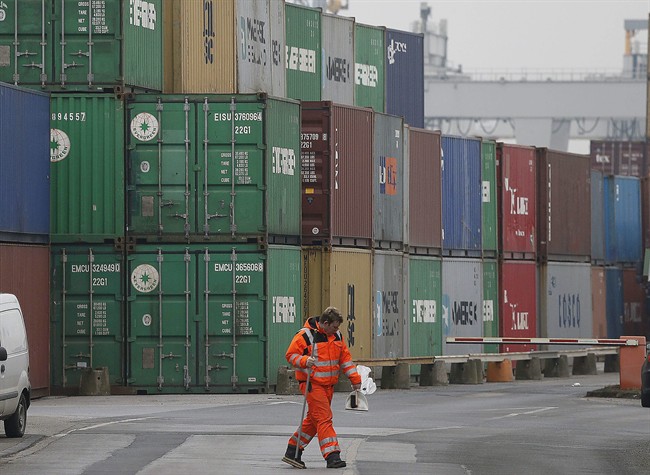As recessions go, Canada just experienced about as mild of a downturn as it gets in the first half of the year, and is once again in growth mode, economists from TD Bank said in a new forecast on Monday.

“The weakness in the first half of the year is in the rear-view mirror and the Canadian economy stands ready to resume growth,” the new report said.
The country’s economy will expand by 1.2 per cent for the whole year, according to TD, but “the annual figure masks a rebound in the second half of the year” as growth kicks back into gear at an annualized clip of 2.5 per cent.
Not great most economists would say, but not bad either.
MORE: ‘Best. Recession. Ever.’
A lower loonie and rising U.S. demand means exports are finally “back in the game,” as evidenced by strong trade numbers in June and July, the latest data available. A discounted Canadian dollar – which TD now sees dropping to as low at 73 cents US – is also fueling the second-half rebound through increased tourism, with foreigners taking advantage of the currency drop.
Low interest rates should keep households in the spending mood, too, buoyed by “modest” employment and income gains, TD said, “resulting in steady, if unremarkable, consumption growth.” All told, the economy will grow just over 2 per cent next year through 2017.
That’s if all goes to plan. But as always, there are risks.
MORE: 5 things to know about the economy ahead of federal leaders debate
“While we consider this the most likely outcome, we cannot ignore a number of prominent downside risks to the outlook,” TD chief economist Beata Caranci, deputy chief economist Derek Burleton and economist Brian DePratto, said.
‘Largest risk’
The biggest potential disruption to Canada’s growth plans is admittedly a broad one consisting of several components, the biggest being China and the slowdown now gripping the world’s second-biggest economy.
A slowdown abroad, led by China, poses a bigger threat than a housing bust or debt bubble among Canadian households, TD said.
What happens in China matters to Canada, which is a net exporter of commodities. China accounts for as much as 80 per cent of new metal demand at any given time, and a third of worldwide oil demand, according to TD’s economists.
MORE: 5 reasons why China’s ‘new normal’ is rattling world markets
While U.S.-bound exports are poised to rise, it remains uncertain what the slowdown in China will mean for exported goods and materials headed for it as well as other regions – a Chinese slowdown is symptomatic of a slowing global economy, experts say.
TD’s 2016 outlook “depends” on a Canadian export boom next year for more than a quarter of the bank’s estimated GDP growth. “Any disappointment in exports presents a key risk to our outlook,” the economists said.
Here’s how TD sees Canada’s economic growth quarter by quarter over the next couple of years:
WATCH: With Canada in a recession, the economy is going to be top of mind for voters. Here’s a quick explainer on how we got into a recession and what it means to Canadians.



Comments